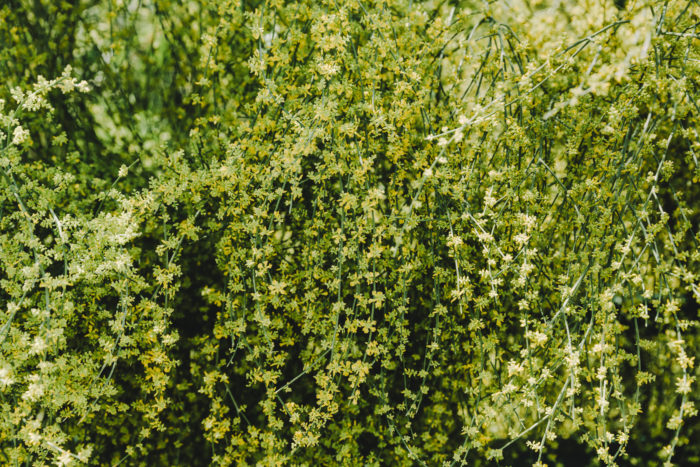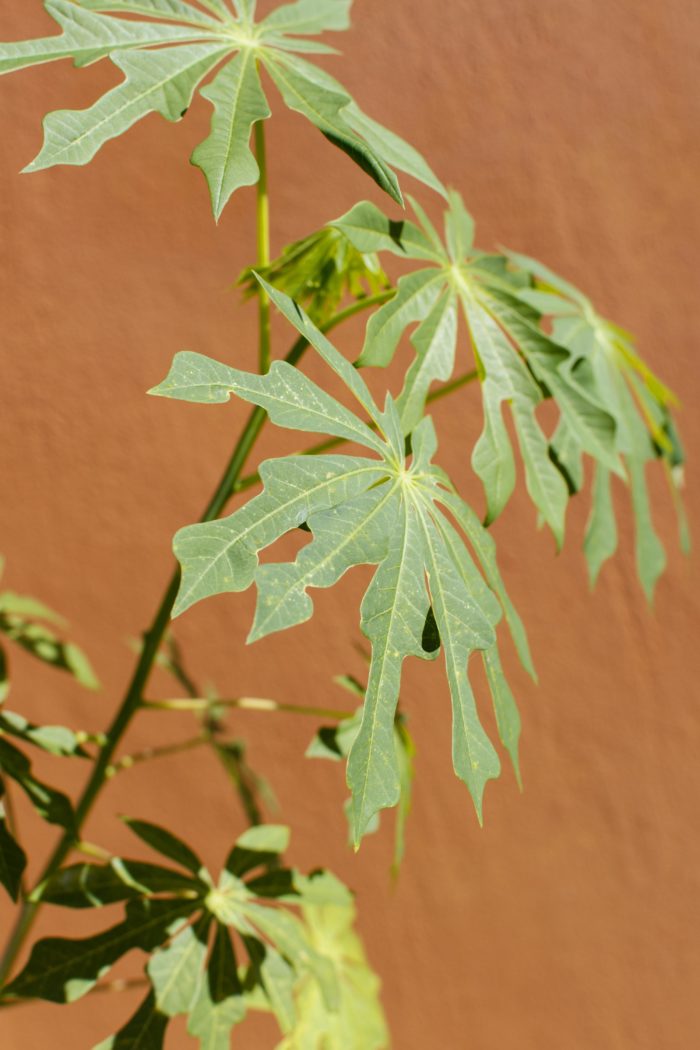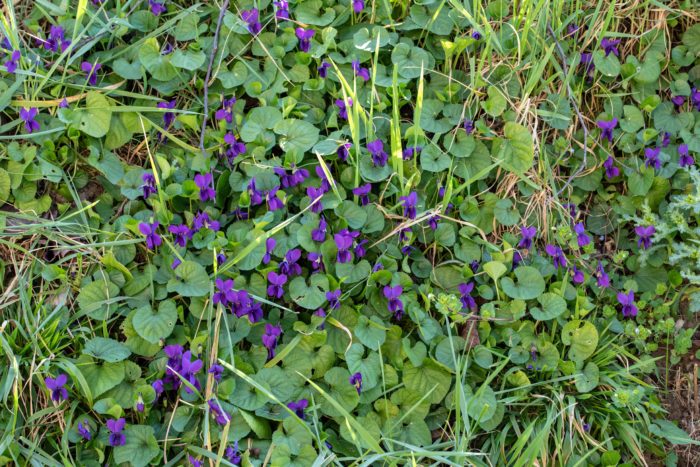Creeping Charlie is a common lawn weed that has been plaguing gardeners for years. It’s an invasive species that can quickly take over your yard, making it difficult to get rid of and even harder to keep under control.
But do you think you have Creeping Charlie but aren’t sure?
What other plants might look like Creeping Charlie?
That’s where this article comes in! We’ll go over the different types of plants that resemble the real thing so you can make sure your lawn stays free from weeds. So let’s dive into how to identify Creeping Charlie look-alikes!
Most Common Plants Similar to Creeping Charlie
The most common plants that resemble Creeping Charlie are creeping jenny, garlic mustard, wild violets, clovers, dollar weed, purple deadnettle, and henbit. All of these plants have similarities in appearance such as heart-shaped leaves and purple flowers, but there are a few distinct differences between these species.

Creeping Charlie vs. Creeping Jenny
Creeping Charlie (Glechoma hederacea) and Creeping Jenny (Lysimachia nummularia) are both low-growing, mat-forming ground covers. Both plants have rounded leaves and produce small, yellow flowers. Creeping Charlie is a member of the mint family and has a strong minty odor when crushed. It is an invasive plant in many areas and can be difficult to control. Creeping Jenny is not in the mint family and does not have a strong scent. It is not considered to be invasive. Creeping Charlie can tolerate full sun to partial shade, while Creeping Jenny prefers partial to full shade. Both plants prefer moist soil but will tolerate dry conditions once established. In general, Creeping Charlie is more aggressive than Creeping Jenny and can quickly take over an area if left unchecked.
Creeping Charlie and Creeping Jenny are two common ground-cover plants that can be difficult to tell apart. Here are some tips for distinguishing between the two:-
- Creeping Charlie has small, round leaves with scalloped edges, while Creeping Jenny’s leaves are more oval-shaped with smooth edges.
- Creeping Charlie’s flowers are blue or purple, while Creeping Jenny’s flowers are yellow.
- Creeping Charlie tends to grow in dense mats, while Creeping Jenny has a more sprawling habit.
- Creeping Charlie is more tolerant of shade than Creeping Jenny.

Creeping Charlie vs. Garlic Mustard
Creeping Charlie and garlic mustard are both common weeds in North America. They can be difficult to tell apart because they have similar leaves and flowers. Here are some key differences between these two plants:
- Creeping Charlie has round blue-green leaves with scalloped edges. Garlic mustard leaves are triangular-shaped and have a sharper, more serrated edge.
- The flowers of creeping Charlie are small and clustered together, while garlic mustard flowers are larger and more spaced out.
- Garlic mustard is an annual plant, meaning it only lives for one growing season. Creeping Charlie is a perennial, meaning it will come back year after year.
Creeping Charlie vs. Wild Violets

Creeping Charlie and wild violets are often confused with one another because they are both low-growing, creeping plants with heart-shaped leaves. However, there are several key differences between these two plants.
For one, creeping Charlie is a member of the mint family and has square stems, while wild violets are part of the violet family and have round stems. Creeping Charlie also has small purple flowers that bloom in clusters, whereas wild violets have larger, showy purple or blue flowers that bloom singly.
Furthermore, creeping Charlie is considered an invasive species in many parts of North America, while wild violets are not. This is because creeping Charlie can spread rapidly and choke out other plants, whereas wild violets typically stay put.
So, if you’re trying to identify a plant in your yard and you’re not sure whether it’s a creeping Charlie or a wild violet, take a close look at the stem shape and flower type. If it’s got square stems and small purple flowers in clusters, it’s probably creeping Charlie. If it’s got round stems and large purple or blue flowers that bloom singly, it’s likely a wild violet.
Creeping Charlie vs. Clovers
Creeping Charlie (Glechoma hederacea) and clovers (Trifolium spp.) are often confused for one another because they are both low-growing, creeping plants with round leaves. Let’s talk about a few differences between them.
Creeping Charlie is a member of the mint family (Lamiaceae), while clovers are members of the pea family (Fabaceae). This means that they have different flower structures: Creeping Charlie has small, tubular flowers that bloom in clusters, while clovers have larger, showy flowers that bloom singly or in pairs.
Another difference is that Creeping Charlie is a perennial, meaning it lives for more than two years, while most clovers are annuals, living for just one season. This means that you’ll need to remove Creeping Charlie from your lawn or garden every year if you don’t want it to take over, but you can simply let clovers die off at the end of the season. Finally, Creeping Charlie is more tolerant of shade than clovers; in fact, it prefers shady areas. Clovers, on the other hand, prefer full sun.
Creeping Charlie vs. Dollarweed
Creeping Charlie and dollar weed are both common lawn weeds in the United States. They can be difficult to tell apart because they have similar leaves and grow close to the ground. Here are some key differences between creeping Charlie and dollar weed:
- Creeping Charlie has small, round leaves that are dark green in color. Dollarweed has larger, oval-shaped leaves that are lighter green in color.
- Creeping Charlie has a creeping or trailing growth habit, meaning it spreads out horizontally across the ground. Dollar weed grows straight up, so it is more upright in appearance.
- Creeping Charlie flowers are blue or purple, while dollar weed flowers are yellow.
Creeping Charlie vs. Purple Deadnettle
Creeping Charlie and purple deadnettle are both low-growing, spreading plants with purple flowers. But there are some key differences between these two plants.
Creeping Charlie (Glechoma hederacea) is a perennial, while purple deadnettle (Lamium purpureum) is an annual. That means that creeping Charlie will come back year after year, while purple deadnettle will die off at the end of the growing season.
Creeping Charlie also has rounder, softer leaves than purple deadnettle. And its flowers are borne in clusters of 3-6, while purple deadnettle flowers are borne singly or in pairs. Finally, creeping Charlie is a tough plant that can tolerate a wide range of growing conditions. Purple deadnettle, on the other hand, prefers moist soil and full sun to partial shade.
Creeping Charlie vs. Henbit
Creeping Charlie (Glechoma hederacea) and henbit (Lamium amplexicaule) are both common winter annual weeds in turf. They can be difficult to control because they often emerge earlier in the fall and grow rapidly throughout the winter. While their growth habits are similar, there are several key differences between these two weeds.
Creeping Charlie is a member of the mint family and has small, scalloped leaves that are arranged in pairs along the stem. The leaves are dark green with purple flowers that bloom in early spring. Henbit is a member of the Lamium family and has triangular-shaped leaves that are arranged in whorls around the stem. The leaves are green with purple flowers that bloom in late spring.
Creeping Charlie reproduces by seed and spreads rapidly through creeping stems that root at the nodes. Henbit reproduces by seed and also spreads through its creeping stems, but it does not root at the nodes.

